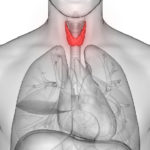What is oropharyngeal cancer?
Oropharyngeal cancer refers to any type of cancer that originates in the tonsils, the base of the tongue, the soft palate (the roof of the mouth) or the pharynx (the top of the throat). In oropharyngeal cancer, there is a conversion of normal cells of the oropharyngeal cavity into malignant (cancerous) cells.
Read more on what is throat cancer here.
The biggest risk factors for oropharyngeal cancer are:
- Use of tobacco in the form of cigarettes, bidis, etc
- Use of smokeless tobacco in the form of khaini, gutkha
- HPV (human papillomavirus) infections due to unsafe sexual practices
- Excessive use of hot beverages
The most common signs and symptoms of oropharyngeal cancer include:
- A persistent sore throat
- Uneasiness in deglutition
- Blood-tinged cough sputum
A vast majority of oropharyngeal cancers are cases of oropharyngeal squamous cell carcinoma (OSCC). This type of cancer begins in the flat cells i.e squamous cell lining of the throat.
Anatomy of the pharynx
The pharynx is a nearly 5-inch long hollow tube that originates behind the nose, travels down the neck, and ends at the top of the windpipe and the food pipe.
The pharynx consists of:
- The nasopharynx
- The oropharynx
- The hypopharynx
Anatomy of the oropharynx
‘Oropharynx’ refers to the middle part of the pharynx (throat), situated behind the oral cavity (mouth). The pharynx is a nearly 5-inch long hollow tube connecting the nose to the windpipe (trachea) and the food pipe (esophagus). Both air and food particles pass through the pharynx on their way from the mouth/nose to the esophagus or the trachea.
The oropharynx includes:
- The soft palate
- The side and back walls of the throat
- The tonsils
- About one-third of the tongue (base of the tongue)




